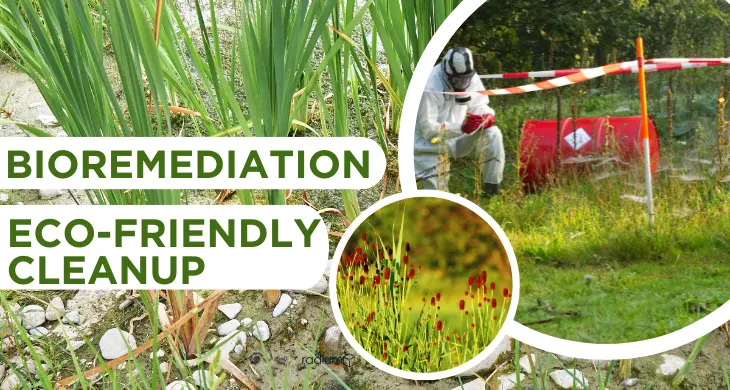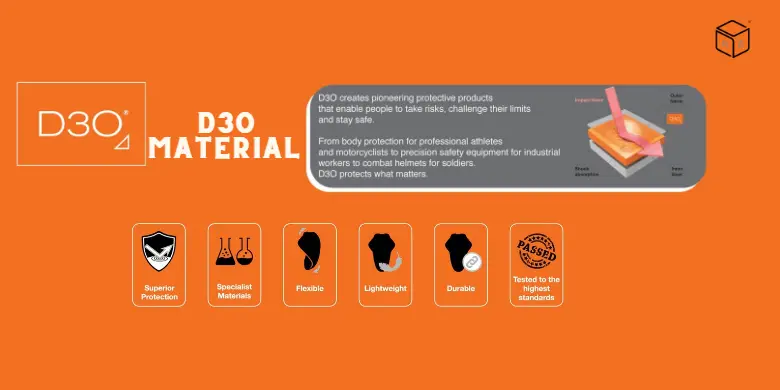In a world facing environmental challenges like pollution and contamination, the need for effective and sustainable cleanup methods has never been greater. This is where bioremediation steps in as a game-changer. Bioremediation is an eco-friendly and efficient approach that utilizes the power of living organisms to remove or neutralize pollutants from soil, water, and air. In this comprehensive guide, we will delve into the fascinating world of bioremediation, exploring its mechanisms, applications, benefits, and the pivotal role it plays in restoring and preserving our planet’s delicate ecosystems.
Understanding Bioremediation:
Bioremediation is a groundbreaking approach that leverages the extraordinary abilities of living organisms to cleanse the environment from various contaminants. At its core, this process mimics nature’s own mechanisms for dealing with pollutants. By employing microorganisms such as bacteria, fungi, or even plants, bioremediation can degrade, transform, or completely remove hazardous substances from soil, water, or air. Understanding the fundamentals of bioremediation is crucial for appreciating how it offers a sustainable and eco-friendly solution to some of the most pressing environmental challenges.
Types of Bioremediation:
Bioremediation is a versatile and eco-friendly approach to mitigating environmental pollution, and it comes in several distinct forms, each tailored to address specific contamination scenarios. These types of bioremediation methods leverage the unique capabilities of living organisms to cleanse soil, water, or air. Understanding the various bioremediation strategies is essential for selecting the most suitable one to tackle a particular environmental challenge. Here, we explore the primary types of bioremediation techniques:
- In-Situ Bioremediation: In this method, the treatment takes place directly at the site of contamination. Microorganisms or plants are introduced to the affected area to break down or neutralize the pollutants. In-situ bioremediation is often a cost-effective and minimally invasive solution for restoring polluted environments.
- Ex-Situ Bioremediation: Unlike in-situ bioremediation, ex-situ bioremediation involves the removal of contaminated material from the site to be treated elsewhere. This method is commonly used when in-situ treatment is not feasible due to site conditions or the type and extent of contamination.
- Phytoremediation: Phytoremediation employs plants to absorb, accumulate, or transform contaminants in soil or water. Plants have a remarkable ability to take up and store heavy metals and other pollutants, making this method particularly useful for addressing issues like soil contamination and wastewater treatment.
- Biostimulation: Biostimulation involves enhancing the growth and activity of indigenous microorganisms by providing them with essential nutrients, oxygen, or other growth-promoting factors. This approach accelerates the biodegradation of contaminants in the environment.
- Bioaugmentation: Bioaugmentation is the deliberate introduction of specific microbial strains or genetically engineered organisms to enhance the bioremediation process. These introduced microorganisms possess unique abilities to metabolize particular pollutants, making bioaugmentation a targeted and powerful solution.
- Natural Attenuation: Sometimes, environmental conditions are favorable for the natural attenuation of contaminants without any human intervention. In such cases, bioremediation relies on the inherent capabilities of indigenous microorganisms to gradually reduce pollutant levels.
- Composting: Composting is an ex-situ bioremediation method that focuses on organic pollutants. Microorganisms in compost piles break down organic waste, transforming it into nutrient-rich compost, which can be beneficial for soil improvement.
Each type of bioremediation has its advantages and is most effective in specific contexts. Understanding these methods and their applications is crucial for designing successful remediation strategies tailored to the unique challenges of polluted sites. In the subsequent sections, we will delve deeper into each type of bioremediation, exploring their mechanisms, benefits, and real-world applications.
Applications of Bioremediation:
Bioremediation has proven to be a versatile and eco-friendly solution for addressing a wide range of environmental contamination issues. Its applications span across various domains, from soil and water to air quality management. Here are some notable applications of bioremediation:
- Oil Spill Cleanup: Bioremediation is an effective method for mitigating the environmental impact of oil spills. Microorganisms, such as oil-eating bacteria, can naturally break down and digest the spilled oil, accelerating the cleanup process.
- Soil Contamination: Contaminated soil, whether due to industrial pollutants, heavy metals, or pesticides, can be rehabilitated using bioremediation techniques. Microorganisms in the soil are stimulated to degrade or transform the contaminants, making the soil safe for agricultural or industrial use.
- Wastewater Treatment: Bioremediation is widely employed in treating industrial and municipal wastewater. Microorganisms in treatment plants help break down organic matter, reducing water pollution and producing cleaner effluents.
- Groundwater Remediation: Bioremediation can restore groundwater contaminated with various pollutants, including chlorinated solvents and nitrates. This method can prevent the further spread of contaminants and protect drinking water sources.
- Heavy Metal Removal: Phytoremediation, which uses plants to absorb heavy metals like lead, cadmium, and arsenic, is an effective means of removing these toxic elements from soil and water.
- Landfills and Solid Waste: Composting, a type of bioremediation, is used to manage organic waste in landfills. Microorganisms break down organic materials, reducing the volume of waste and preventing the production of harmful landfill gases.
- Hydrocarbon Contamination: Bioremediation can address hydrocarbon-contaminated sites, whether due to fuel leaks or other sources. Microbes metabolize hydrocarbons, converting them into less harmful byproducts.
- Radioactive Waste Cleanup: Certain extremophilic microorganisms can thrive in radioactive environments. They are employed in bioremediation efforts to reduce radioactivity levels in contaminated areas.
- Air Pollution Control: Biofilters and biotrickling filters use microorganisms to treat air emissions and remove pollutants like volatile organic compounds (VOCs) and odors.
- Agricultural Residue Management: Bioremediation helps in the sustainable management of agricultural residues and organic waste. Composting and other biodegradation processes convert organic matter into valuable compost for improving soil quality.
Benefits and Challenges of Bioremediation:
Bioremediation is a promising and eco-friendly approach to cleaning up environmental contamination. Understanding both aspects is crucial for effective environmental management. Here are the benefits and challenges of bioremediation:
Benefits:
- Environmentally Friendly: Bioremediation relies on natural processes and living organisms, making it an eco-friendly solution. It minimizes the use of harsh chemicals and their potential side effects.
- Cost-Effective: Bioremediation is often more cost-effective than traditional cleanup methods. It requires fewer resources and can be applied in situ, reducing transportation and disposal costs.
- Sustainability: Bioremediation promotes sustainability by restoring contaminated areas to their natural state. It allows ecosystems to recover and reduces the long-term impact of pollution.
- Non-Invasive: In many cases, bioremediation can be performed without major excavation or disturbance to the contaminated site.
- Wide Applicability: Bioremediation techniques can be adapted to address a variety of contaminants in different settings, including soil, water, and air.
- Natural Breakdown: Bioremediation harnesses the natural ability of microorganisms and plants to break down contaminants, such as hydrocarbons and heavy metals, into less harmful byproducts.
Challenges:
- Specificity: Bioremediation may be limited by the specificity of the microorganisms or plants used. Some contaminants require specialized organisms for effective cleanup.
- Time-Consuming: Bioremediation processes can be slower compared to chemical methods, especially for complex contaminants. The rate of cleanup depends on environmental conditions and the availability of suitable microbes.
- Regulatory Complexities: Compliance with environmental regulations can be challenging. Demonstrating the effectiveness of bioremediation to regulatory authorities may require extensive monitoring and documentation.
- Unpredictable Outcomes: The outcome of bioremediation can be less predictable than traditional methods, as it relies on natural processes. Success may vary depending on site-specific conditions.
- Limitations in Extreme Environments: Extreme conditions, such as highly acidic or saline environments, may not support the growth of the microorganisms necessary for bioremediation.
- Resistance and Adaptation: Some contaminants can develop resistance to bioremediation, requiring ongoing adjustments to treatment strategies.
Future Prospects of Bioremediation:
Bioremediation is an evolving field with promising prospects for addressing environmental contamination and promoting sustainable solutions. As technology advances and environmental concerns continue to grow, bioremediation is expected to play an increasingly significant role in the future. Here are some key future prospects:
- Advanced Genetic Engineering: With advances in genetic engineering, scientists can design and modify microorganisms to enhance their bioremediation capabilities. Tailored microorganisms can target specific contaminants and adapt to changing environmental conditions.
- Nanobioremediation: Nanotechnology is being integrated into bioremediation techniques to create nanomaterials that can effectively remove pollutants at the nanoscale. This approach holds great potential for the treatment of complex contaminants.
- Synergistic Approaches: Combining different bioremediation methods, such as phytoremediation with microbial degradation, can enhance overall cleanup efficiency. Synergistic approaches offer a more comprehensive solution for complex contamination scenarios.
- Remote Monitoring and Sensing: Future bioremediation projects may incorporate remote monitoring and sensing technologies. Real-time data collection and analysis will enable more precise control and adjustment of bioremediation processes.
- Climate Change Adaptation: Climate change can impact contamination levels and environmental conditions. Bioremediation strategies will need to adapt to these changes, such as addressing altered contaminant mobility due to shifting precipitation patterns.
- Big Data and AI: The use of big data and artificial intelligence (AI) can improve the modeling and prediction of bioremediation outcomes. AI-driven algorithms can optimize treatment strategies based on vast datasets.
- Regulatory Frameworks: As bioremediation gains prominence, regulatory agencies will establish clearer guidelines and standards for its application. These frameworks will help streamline approval processes and ensure environmental safety.
Frequently Asked Questions:
Ques: What is bioremediation, and how does it work?
Bioremediation is a natural or engineered process that uses microorganisms or plants to degrade or remove pollutants from the environment. Microbes break down contaminants into harmless byproducts, making it an eco-friendly cleanup method.
Ques: What types of contaminants can be treated with bioremediation?
Bioremediation can address a wide range of contaminants, including hydrocarbons, heavy metals, pesticides, solvents, and various organic pollutants.
Ques: Is bioremediation safe for the environment and human health?
Bioremediation is generally safe when applied correctly. It often reduces risks associated with hazardous waste and can be more environmentally friendly than traditional cleanup methods.
Ques: How long does bioremediation take to clean up contaminated sites?
The cleanup duration varies depending on factors such as the type and extent of contamination, environmental conditions, and the specific bioremediation method used. It can range from a few months to several years.
Ques: What are the advantages of bioremediation over other cleanup methods?
Bioremediation is cost-effective, minimizes environmental disruption, and can target specific contaminants. It’s also sustainable, as it uses natural processes to restore contaminated sites.
Ques: Are there any limitations to bioremediation?
Bioremediation may not be suitable for all contaminants or site conditions. For example, it’s less effective for highly toxic substances like radioactive materials. Additionally, it may require longer timeframes for complete cleanup.
Conclusion:
Bioremediation has proven to be a powerful ally in the battle against environmental pollution. As we conclude this guide, you’ll have a comprehensive understanding of how bioremediation works, its applications, and the pivotal role it plays in eco-friendly cleanup. By harnessing the natural abilities of microorganisms and plants, we can work towards a cleaner, healthier planet for current and future generations. Join us on this journey of environmental restoration and discovery.




